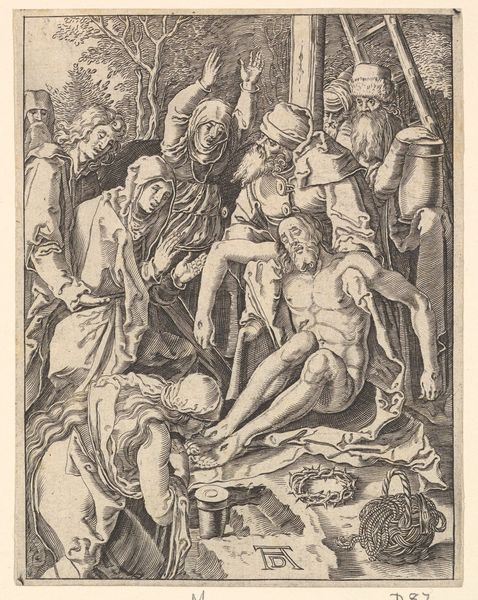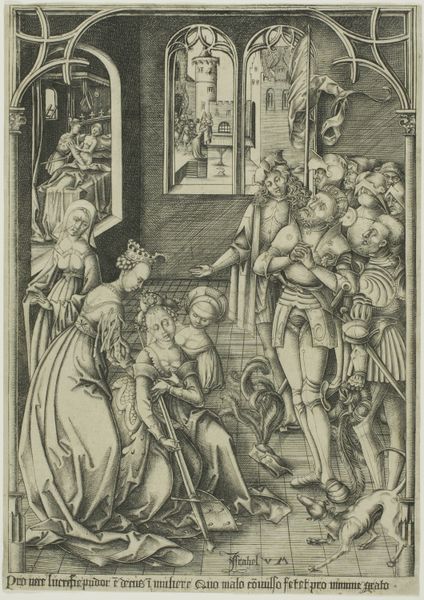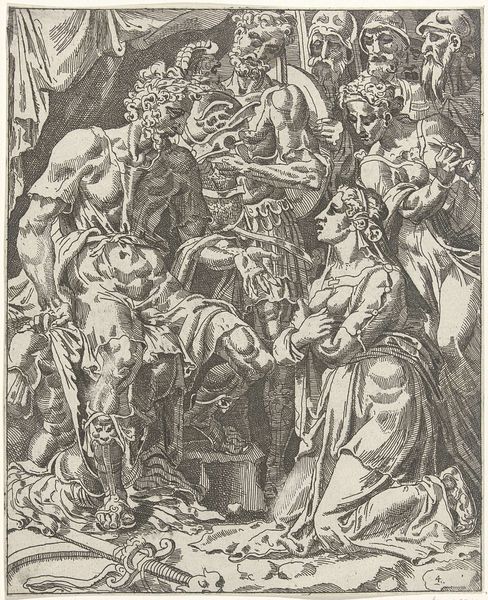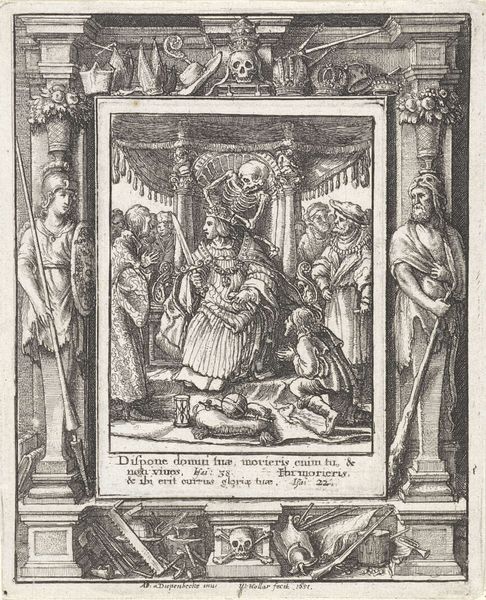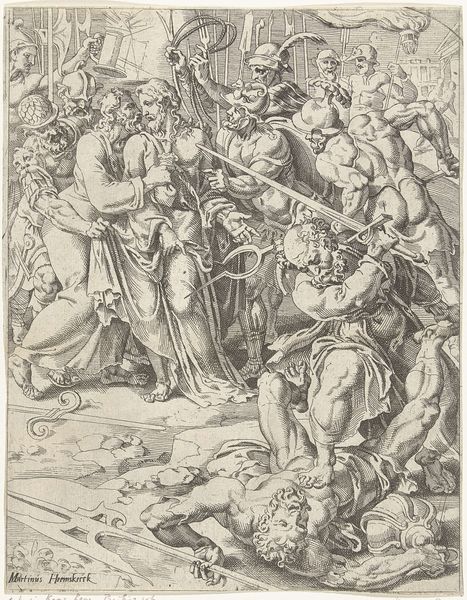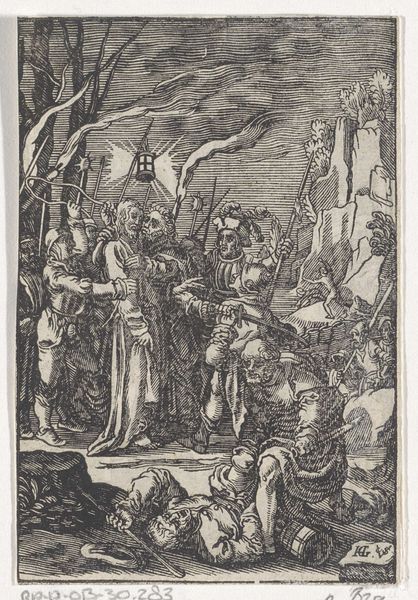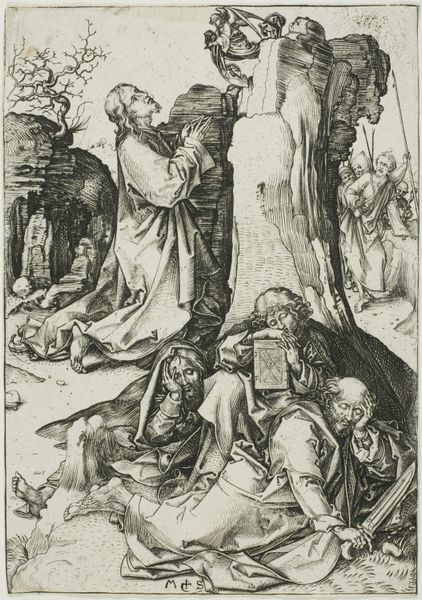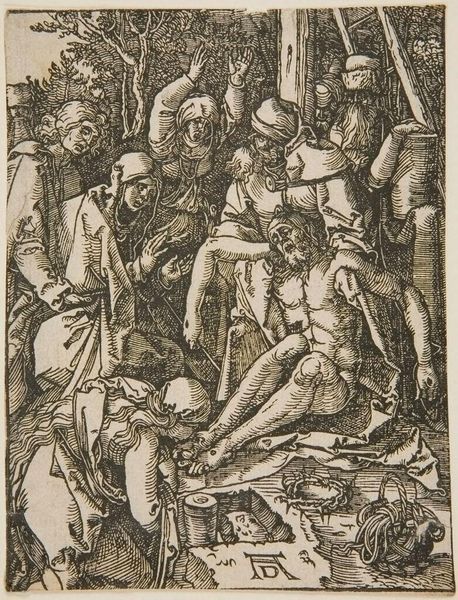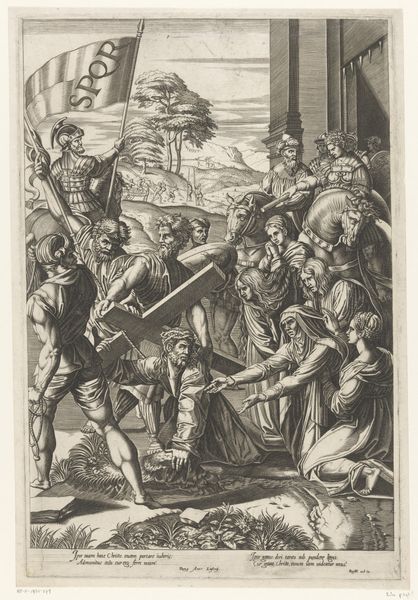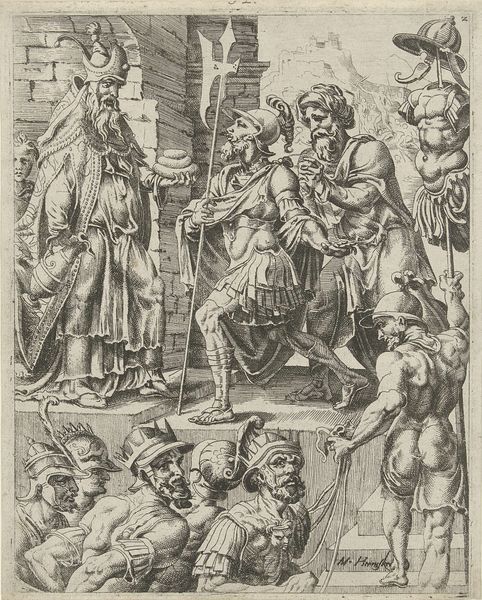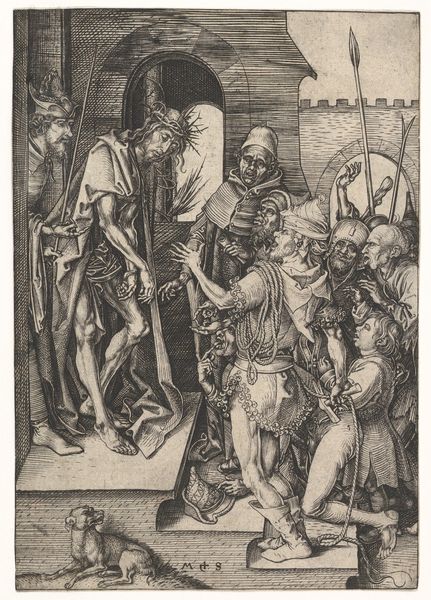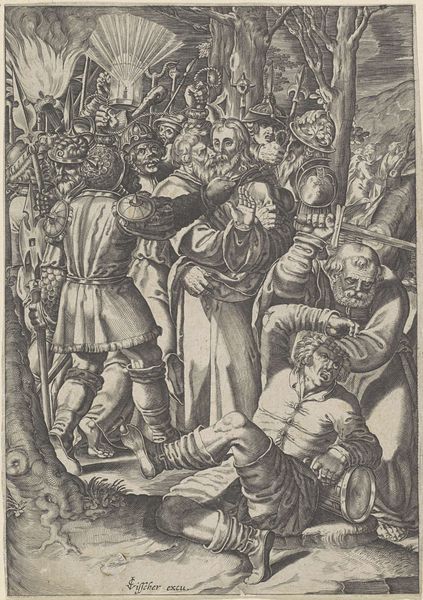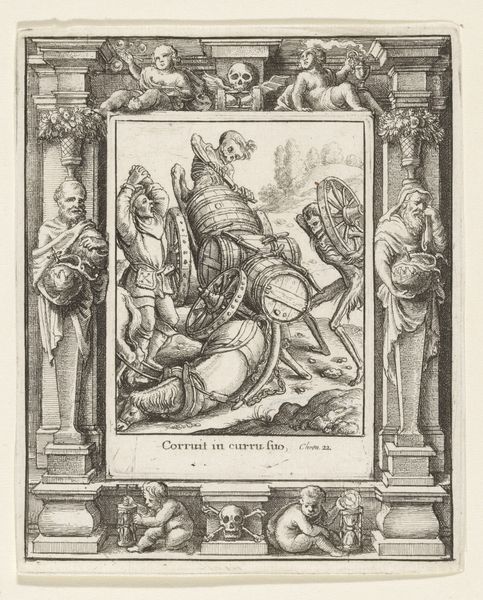
drawing, print, intaglio, engraving
#
drawing
#
narrative-art
#
pen drawing
# print
#
pen illustration
#
pen sketch
#
intaglio
#
figuration
#
11_renaissance
#
pen work
#
history-painting
#
northern-renaissance
#
engraving
Dimensions: height 128 mm, width 100 mm
Copyright: Rijks Museum: Open Domain
Editor: This is “Bewening” by Marcantonio Raimondi, made sometime between 1511 and 1534. It’s currently at the Rijksmuseum. It seems to depict the lamentation of Christ after his crucifixion. It feels really emotionally charged, and the use of line work is fascinating. What catches your eye in this print? Curator: What I see immediately is a very deliberately constructed image serving very deliberate functions. Raimondi’s “Bewening,” seen through the lens of its time, is a masterful act of visual communication deeply embedded in the religious and political landscape. Considering prints like this, how were they disseminated and received in the 16th century? Editor: I imagine widely! Because prints are multiples, right? So people outside the elite could theoretically access images that before were limited to the very wealthy. Curator: Precisely! Think of Raimondi working during the Reformation. His engravings allowed for the rapid spread of imagery that supported or challenged religious doctrines. This wasn't just about piety; it was about power. Look at the way Christ’s body is displayed – the careful, detailed engraving elevates its importance, shaping viewers' understanding and devotion. Does this shift your understanding of the work at all? Editor: It makes it feel… less straightforward, I guess. It's beautiful, yes, but it’s also doing a specific job, influencing beliefs in a pretty turbulent time. I hadn’t thought about that. Curator: And that’s the core of understanding its significance. Raimondi's work, viewed within its socio-political context, transcends simple artistry and enters the realm of active participation in the cultural debates of the Renaissance. It makes me question, how often do we consider the intentions of institutions or powers behind seemingly devotional artworks? Editor: That’s such a useful insight! Now, I am questioning everything. I’m going to be looking at art so differently from now on.
Comments
No comments
Be the first to comment and join the conversation on the ultimate creative platform.
